- California Assembly OKs highest minimum wage in nation
- S. Korea unveils first graphic cigarette warnings
- US joins with South Korea, Japan in bid to deter North Korea
- LPGA golfer Chun In-gee finally back in action
- S. Korea won’t be top seed in final World Cup qualification round
- US men’s soccer misses 2nd straight Olympics
- US back on track in qualifying with 4-0 win over Guatemala
- High-intensity workout injuries spawn cottage industry
- CDC expands range of Zika mosquitoes into parts of Northeast
- Who knew? ‘The Walking Dead’ is helping families connect
S. Korean central region under 49 days of rainy season, longest on record
South Korea’s annual rainy season has continued for 49 days now, the longest on record, and is poised to set a fresh record as more rains are forecast to pour down until mid-August.
The monsoon season, which has begun on June 24, tied the previous record of 49 days set in 2013, the Korea Meteorological Administration (KMA) said, and will continue until Aug. 16 in the capital Seoul, Gyeonggi Province and western Gangwon Province.
On the southern resort island of Jeju, the rainy season lasted for 49 days from June 10 to July 28, breaking the previous record of 47 days set in 1998.
This year’s rainy season will end the latest on record, surpassing the previous record set on Aug. 10, 1987.

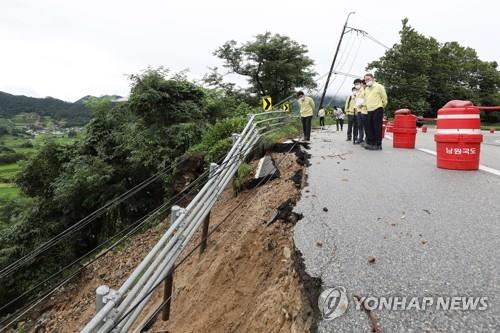
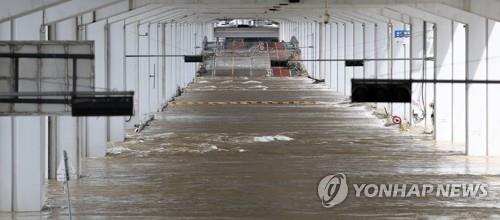
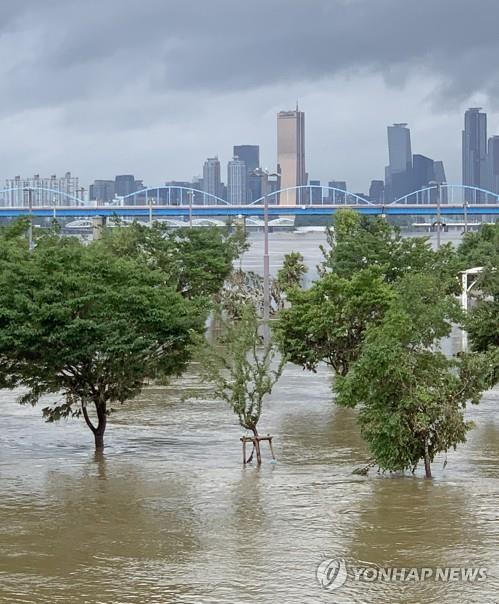

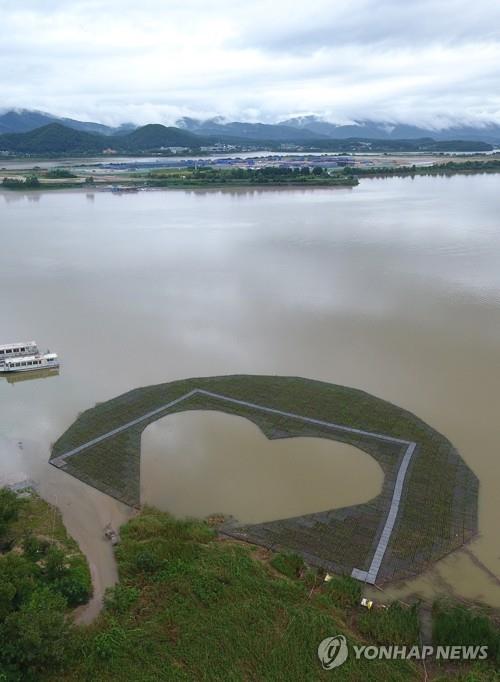
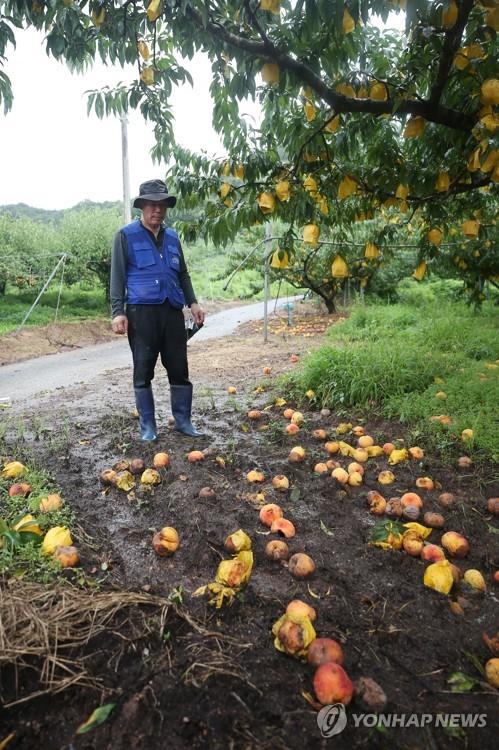
Work to restore a flood-damaged traditional market is under way in Gurye, South Jeolla Province, on Aug. 11, 2020. The entire county was inundated by heavy rains. (Yonhap)
The unusually extended rainy season is caused by climate change and the resulting warmer air that holds more moisture and brings heavier rain.
The seasonal rain, which has particularly pummeled the central region with heavy downpours in August, has taken a heavy toll. It has left 42 people dead or missing and damaged 17,958 facilities. Nearly 7,000 have been displaced from their homes.
According to the analysis by the KMA for the 22-day period from July 20 to Aug. 10, the country received daily torrential rains of more than 150 mm for 15 days. Rainfall of 460 mm occurred in a day in Goseong, Gangwon Province.
Meanwhile Jangmi, the first typhoon to affect the country this season, made landfall on the southeastern island of Geoje on Monday afternoon, bringing heavy rain in the central and southern regions. It weakened to an extratropical cyclone at around 5 p.m., while moving over 10 kilometers northwest of nearby Ulsan. No major damage was reported.
The typhoon dissipated some 38 hours after it formed on Sunday in seas some 600 kilometers southwest of Okinawa, Japan.
More precipitation is forecast for the central region and the provinces of North and South Jeolla and North Gyeongsang on Tuesday, partly due to a new typhoon, Mekkhala, which formed in the South China Sea the previous day, the agency said, adding that the storm is unlikely to pass through the Korean Peninsula.
As rains came down in buckets in Seoul and Gyeonggi Province overnight, causing the water level of the Han River to surpass the flood control limit of 4.4 meters, the city has blocked traffic at the Yeouido interchanges of the Olympic Expressway that connects the city and Gimpo and Hanam. The travel ban on the section between Gayang Bridge and Dongjak Bridge on the expressway was lifted Tuesday afternoon after having been blocked for a few hours earlier in the day.
Jamsu Bridge, which connects the wards of Yongsan and Seocho, has remained closed since Aug. 2, after water consistently reached over the flood control level of 6.2 meters.
Earlier in the morning, the low-lying parts of Seongsu Intersection and Surak Underpass on the Dongbu Expressway were also made off-limits.
Entrances and pedestrian sidewalks of all the 27 streams in Seoul have been closed out of concern for public safety.
Landslide warnings have been issued in the northern wards of Nowon and Gangbuk and the eastern ward of Jungnang, and authorities ordered residents living on hillsides to evacuate to a sturdier place.
Early in the morning, torrential rain destroyed the roof of a house in Yeongdeungpo Ward, western Seoul, temporarily trapping a man in his 60s inside, before he was rescued unharmed. On Monday night, a two-story house in the central ward of Dongdaemun also collapsed. No one was injured.
The weather agency warned of continued strong rain in Seoul, which recorded almost 200 mm of precipitation for the past two days, and its adjacent cities until the night, asking people to remain vigilant against the inclement weather.








![일본 사도광산 [서경덕 교수 제공. 재판매 및 DB 금지]](http://www.koreatimesus.com/wp-content/uploads/2024/07/PYH2024072610800050400_P4-copy-120x134.jpg)


